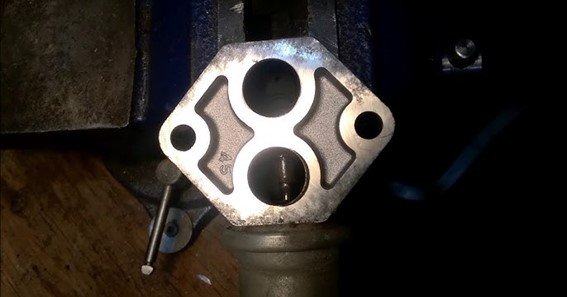The Idle Air Control (IAC) valve in Ford vehicles is an essential component for regulating the engine’s idle speed. It adjusts the airflow entering the engine, ensuring that the vehicle maintains a consistent idle, particularly during load changes or when the engine starts.
One common question is whether the Ford IAC valve is spring-loaded, impacting how it operates and responds to engine commands.
How the Ford IAC Valve Works
The Ford IAC valve is indeed spring-loaded. It typically uses an internal spring mechanism that maintains the valve in a closed or default position when not in operation. This spring allows the valve to respond accurately to signals from the vehicle’s engine control unit (ECU).
When the ECU sends a signal, it activates the IAC valve’s solenoid, which then opens or closes the air passage, allowing more or less air to bypass the throttle plate and regulate idle speed.
Key Features of a Spring-Loaded IAC Valve
- Spring Mechanism: The internal spring ensures that the IAC valve returns to its default position when no electrical signal is present, providing a stable baseline for idle control.
- Solenoid Control: The solenoid in the IAC valve, when energized by the ECU, counteracts the spring tension, adjusting airflow to meet idle requirements.
Common Issues and Troubleshooting
1. Sticky or Stuck Valve
Over time, carbon deposits can cause the IAC valve to stick, making it difficult for the spring to return the valve to its closed position. Cleaning the valve regularly with a suitable cleaner can help prevent this problem.
2. High or Low Idle RPM
If the IAC valve is not functioning properly due to spring failure or clogging, you might experience irregular idle RPMs, which can cause the engine to idle too high or too low. Diagnosing the issue usually involves checking for proper solenoid operation and ensuring that the spring mechanism allows for smooth movement.
3. Engine Stalling
A faulty IAC valve can lead to engine stalling, particularly at idle or when decelerating. This happens if the spring fails to maintain the correct position, restricting airflow needed for stable idling.
Testing the IAC Valve
To test if a Ford IAC valve is working correctly:
- Electrical Check: Disconnect the electrical connector from the IAC and observe the idle. If the engine idle drops significantly, the valve is likely functioning. If there’s no change, it could be stuck open or closed.
- Physical Inspection: Remove the IAC valve and check the spring for resistance. If the spring feels loose or the valve does not return to its default position, it may need replacement.
Conclusion
The question “Is a Ford IAC valve spring loaded?” is crucial for understanding the functionality of your vehicle’s idle air control system.
Yes, Ford IAC valves are typically spring-loaded, allowing precise regulation of airflow to maintain optimal engine idling. If you’re experiencing idling issues, inspecting and maintaining this component can help ensure your vehicle runs smoothly.
Always refer to your vehicle’s manual or consult a professional for specific guidance on Ford IAC valve maintenance.
FAQ
-
Is the Ford IAC valve spring-loaded?
- Yes, the Ford IAC valve uses an internal spring mechanism to regulate airflow based on engine demands.
-
What happens if the IAC valve spring fails?
- If the spring fails, it can lead to idle issues like stalling, rough idling, or inconsistent RPM levels.
-
How can I clean a Ford IAC valve?
- You can remove the valve and clean it with a carburetor or throttle body cleaner to remove any carbon buildup.
-
What are common symptoms of a faulty IAC valve?
- High or low idle RPM, engine stalling, rough idle, and a check engine light are common indicators of IAC valve issues.
-
Can I test the IAC valve on my own?
- Yes, basic tests like disconnecting the IAC electrical connector to check for idle changes can be done at home, but more in-depth testing may require professional assistance.










